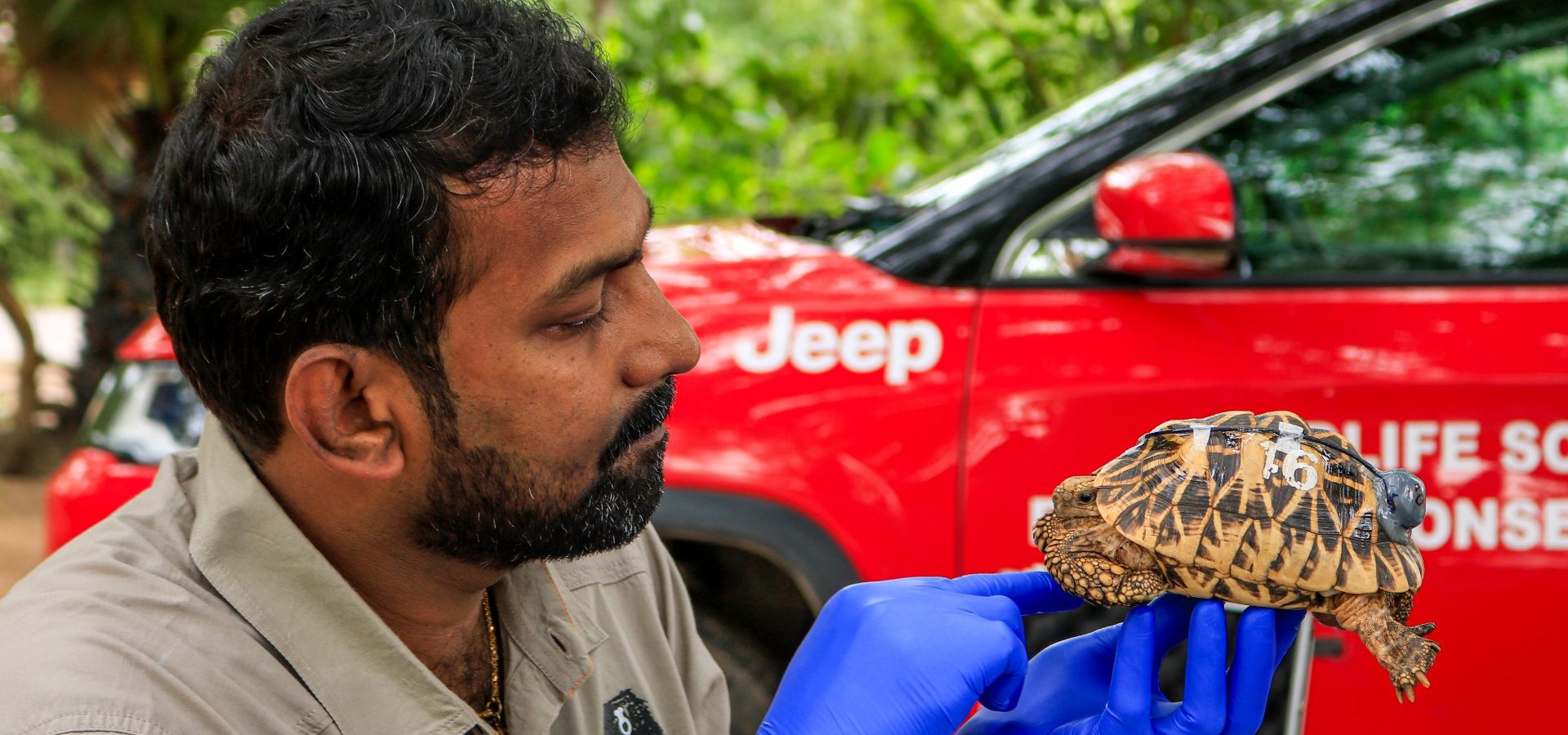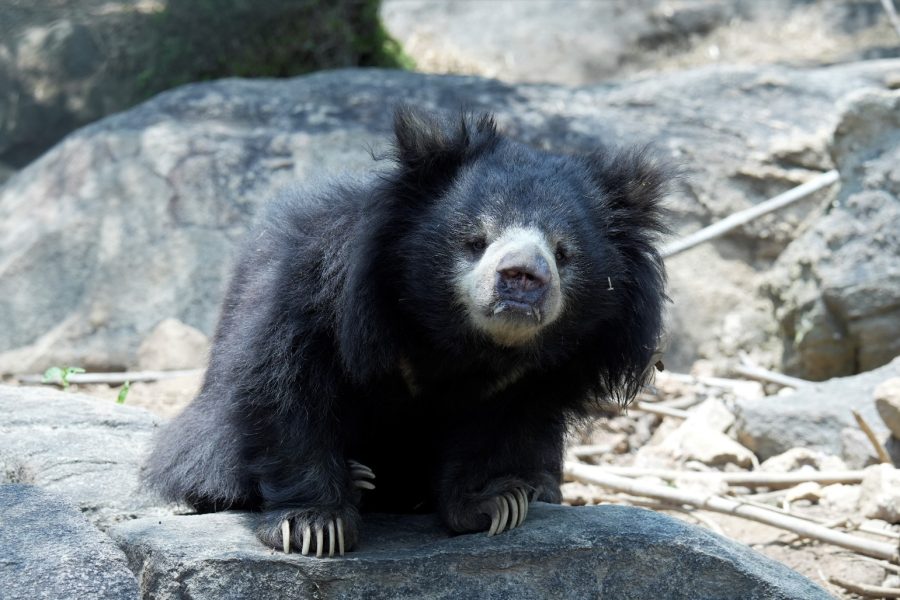Did you know that a tiny piece of technology known as a microchip has helped countless pet owners find their lost pets? These days, we frequently hear about pet dogs and cats getting microchipped. But what exactly does this mean? Microchips are one of the ethical methods of “tagging” animals (domestic as well as wild) for a number of significant purposes such as tracking, identification and research. While it has picked up fast for domestic animals, let’s take a look at how a technological device like a microchip can do wonders for wildlife conservation.
For research and conservation purposes, tagging wild animals is a common practice to gather information about their behaviour, movement patterns, population dynamics, and ecological interactions. Various methods are used for tagging wild animals depending on the species, research objectives, and ethical considerations.
![Radio-collared wild sloth bear. [Photo (c) Wildlife SOS]](https://wildlifesos.org/wp-content/uploads/2023/05/wild_bear_collar_1100x700_watermark.jpg)
So, buckle up as we explore the methods used with utmost caution and expertise to tag animals:
- Collar Tags: Collar tags are fastened around the necks of wild animals and may contain GPS devices, VHF or UHF transmitters, or even satellite transmitters, allowing conservationists and researchers to keep tabs on their movement. Collar tags are typically used for large mammals such as bears, wolves, and big cats. One example of this method is when the Wildlife SOS team radio-collared an elephant herd’s matriarch, Van Devi. The herd was in persistent conflict with locals of Chhattisgarh. The collar on Van Devi helped to track her location and route over long distances and in remote areas. Knowledge about her whereabouts is what heled us keep track of her herd as well and has prevented potential human-elephant conflict situations. Collar tags have proved to be significant tools for researchers as they can transmit location data and provide valuable insights into migration patterns and habitat use.
![Radio-collaring of elephant matriarch Van Devi. [Photo (c) Wildlife SOS]](https://wildlifesos.org/wp-content/uploads/2020/06/radiocollar-CG.png)
- Ear Tags: Ear tags are also commonly used for tagging larger animals. You might have noticed the ears of street animals like stray dogs and cats having tags. This is put on them during animal birth control programmes so that people can identify whether an animal has been spayed or neutered. However, when it comes to wildlife, it may serve a slightly different purpose. The ears of animals such as ungulates (large mammals with hooves such as deer and elk) or marine mammals may have tags attached to the animal that have a unique identification number for individual recognition. Many zoo animals have similar ear tags so that the zookeepers can tell them apart.
- Leg Bands: Leg bands or rings are used for tagging birds. These lightweight bands are placed around the bird’s leg and contain unique identifiers. Leg bands are put on birds during bird banding programmes by researchers so that they can study the birds’ migration patterns, behaviour, and population dynamics. Wing tags are also used for birds, and involve a small and light tag being attached to wings to track large bird species. This has allowed ornithologists to study behaviours specific to birds such as foraging or mating. However, researchers have noted the welfare concerns surrounding wing tags. In an observation on vultures, it was noted that individuals with wing tags covered shorter distances, had become slower and were less likely to fly.
- Microchip: Tucked within an animal’s being lies a device that is smaller than a mere grain of rice: the microchip. Passive Integrated Transponders or PIT tags contain a unique identification number that can be read using specialised scanners. PIT tags are commonly used for amphibians, reptiles, and small mammals. When it comes to pets, microchips have come handy in identifying ownership and for finding lost pets.
![Leopard cubs are microchipped prior to the reunion to understand their movements and identify them. [Photo (c) Wildlife SOS/ Akash Dolas]](https://wildlifesos.org/wp-content/uploads/2023/04/230327_MLRC_Akash_Leopard_cub_reunion_kailasnagar_SOS00871-1.jpg)
At Wildlife SOS, our team at the Manikdoh Leopard Rescue Centre (MLRC) makes use of this microchip technology during rescue and reunion missions. Collaborating closely with the forest department in Maharashtra, our team works towards reuniting abandoned cubs found in sugarcane fields and human habitats with their nurturing mothers.
Within the premises of the MLRC, a dedicated area is set aside for the temporary care of these rescued cubs. Here, the skilled veterinarians from Wildlife SOS undertake the task of microchipping the lost cubs while the rescue team prepares for a successful reunion between the cubs and their mother. The veterinary team carefully implants microchips near the cubs’ tails, ensuring their well-being and creating a stress-free atmosphere throughout the procedure. The health and age of the cub have to be evaluated before beginning the procedure. For newborn cubs under one month old, the team exercises caution and refrains from microchipping them if it would be detrimental to their health.
You may be wondering why microchips need to be placed in rescued leopards and cubs at all. Microchips on leopards are not merely a means of identification; they serve as invaluable tools for conservation research and management. Since each microchip bears a unique ID, it allows our team to study the movement of the rescued leopards or cubs. In case the leopard or the cub are spotted in another human habitat, the microchip reader is used to identify exactly which cub it is. This data helps us to understand the range and movements of these majestic felines, while also assisting in locating and rescuing them from human-leopard conflicts. Additionally, if there are repetitive conflict situations in a particular area, microchips can help ascertain if the same leopard is being encountered from time to time.
![Radio-collaring technology plays an important role in conflict resolution. [Photo (c) Wildlife SOS]](https://wildlifesos.org/wp-content/uploads/2023/06/Elephant_Alert_Phone_734px.jpg)
At the end of the day, when it comes to tagging, it is important to note that the purpose behind this is to prioritise the welfare of animals in the most humane and ethical way possible. These methods are carefully designed to prevent any adverse effect on the animals and are carried out by trained professionals only.
To support the efforts of our team towards leopard conservation at MLRC, consider making a donation by clicking here.





